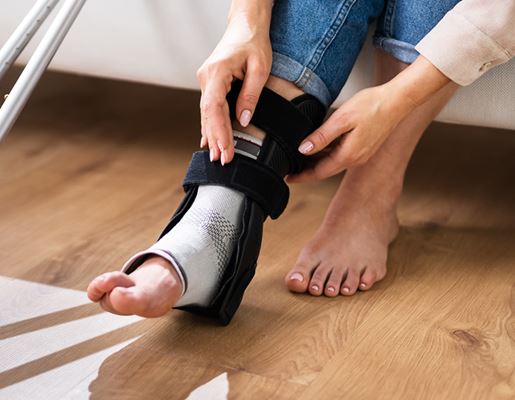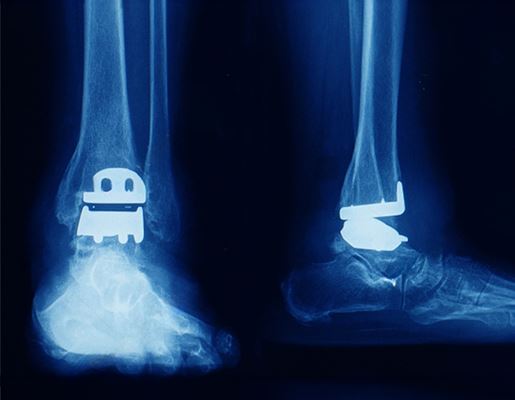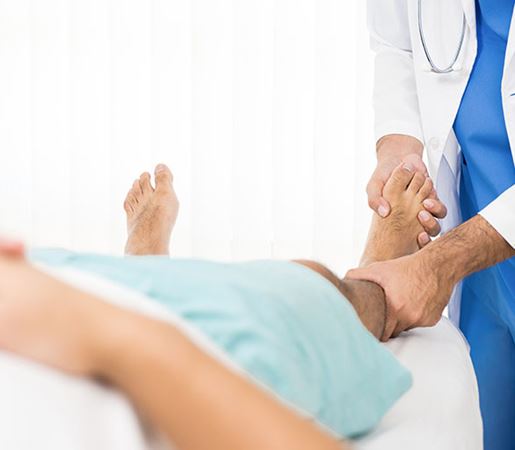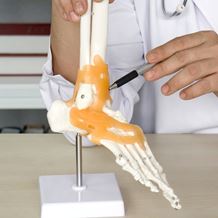Ankle Ligament Surgery – Day of Surgery
- Home
- Services
- Orthopaedics
- Knowledge Hub
- Ankle Replacement Surgery – Day of Surgery
Ankle ligament surgery, sometimes referred to as lateral ankle ligament surgery or reconstruction, is a common medical procedure to repair and strengthen damaged ankle ligaments that no longer support and protect your ankle joint.
The procedure works by tightening up one or both of the outside ligaments that stabilise the ankle, reducing pain and improving stability. The type of surgery required will depend on the severity of the condition.
Types of Ankle Ligament surgery
Ankle ligament repair is necessary when the ligaments are stretched beyond their normal capacity and no longer provide enough support. Patients may have an ankle arthroscopy first to determine the extent of the repair required. This minimally invasive procedure works by using a camera and tiny tools that enable your doctor to examine the area more closely. In milder cases, the weakened ankle ligaments may be repaired or tightened using stitches. In more severe cases where the ligament has pulled away from the bone it must be reattached and may require support from other tissues. In this instance, your doctor will strengthen the ligament by using a tendon from another part of your body.

Before Surgery
Having observed a 6-8 hour fast, you will be asked to arrive at hospital in time to complete your clinical admission. Your anaesthetist will explain the type of anaesthetic to be used and the procedure involved, and your surgeon will be available to answer any final questions before the operation begins. The extent of the surgery will vary by patient and will depend on the type of repair required. The operation itself can take up to 2 hours.
During surgery
If your surgery is minimally invasive, your doctor will begin by making a small incision through the skin and muscle on the outside of your ankle. Using a camera and small instruments, it is possible to repair any weakened ligaments that include the ATFL (anterior talofibular ligament) and the CFL (calcaneofibular ligament). This is achieved by detaching and reattaching the ligaments so that they are shorter and stronger. If one of the ligaments is beyond repair, your doctor may graft a tendon from another part of your body as a replacement.
Depending on the severity of the ankle instability, either one or both major ligaments may need reconstruction. This can be done in the same procedure by making further small incisions, with the new tendon held in place using special screws and pins. Once the operation is completed, the wound is closed with stitches and your ankle will be secured in place with a bandage and splint.

After Surgery
Ankle ligament surgery is usually performed as an outpatient procedure which means you can generally return home the same day. After the surgery is complete, you will be transferred to the recovery room until your doctor advises that you are able to return home. This is usually one to two hours after surgery, but will depend on the type of anaesthetic that has been used. After surgery, your foot is likely to be a cast or protective boot. The hospital will provide you with crutches to get around, and as you will be unable to drive, it’s a good idea to arrange for someone to bring you home.
What to look out for
- Rest your ankle as much as you can after surgery and use elevation and ice as directed by your doctor to help reduce the swelling and pain.
- It’s completely normal for your ankle to swell after surgery, and this can take up to six months to settle down.
- Carefully follow all advice from your medical team around wound care and pain relief.
- Avoid placing any weight through your operated leg for the first two weeks after surgery.
- Your doctor will advise when it is safe to transition into a special walking boot.
- Follow your personalised physiotherapy plan designed to promote healing and restore function and mobility.
- Contact your medical team if you notice any redness around the wound site, ongoing and persistent pain, or any type of swelling in the calf above your operated ankle as it could be a sign of infection.




